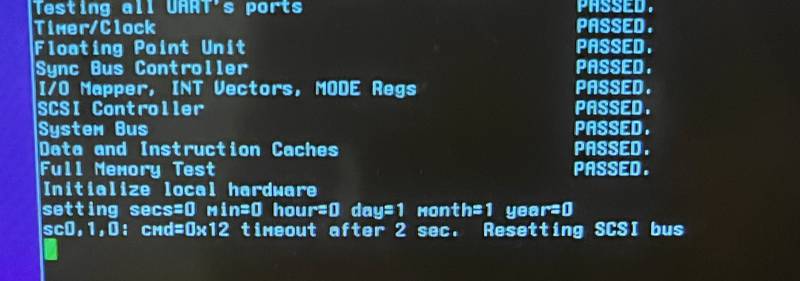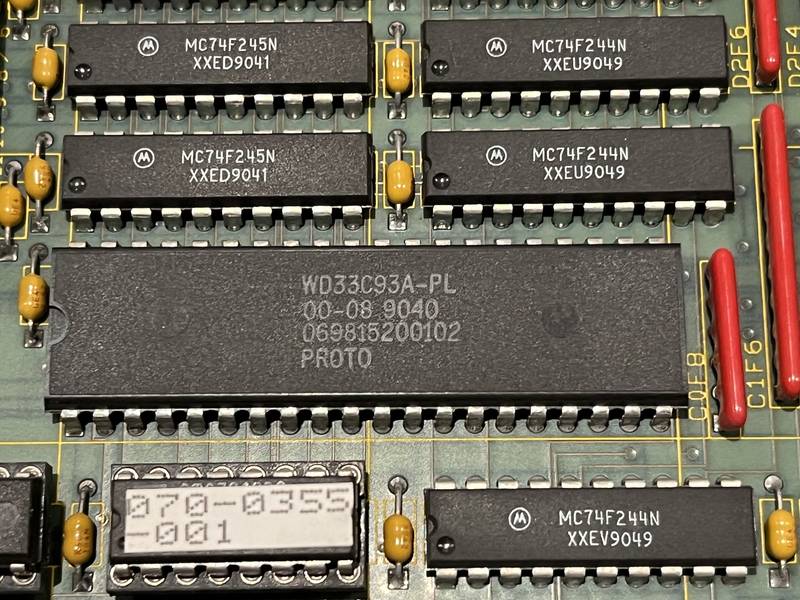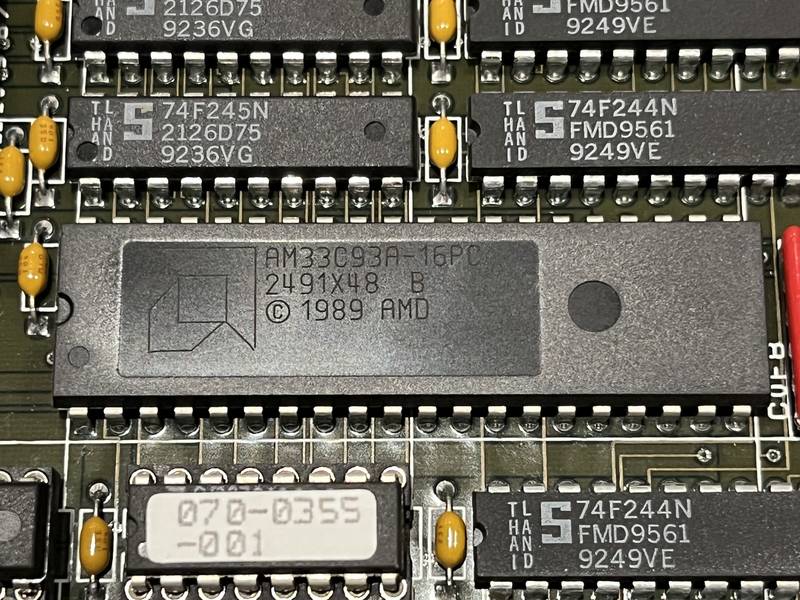I did a fair bit of work on my Crimson this year, and one thing it still did was:

at cold boot. Entering PROM console and calling up 'hinv' would show no SCSI disk #1. If I pressed the reset button and let it POST again, all would be fine. (Yes the NVRAM battery is empty, but that's unrelated).
I decided to get to the bottom of this one.
- First, I suspected the disk, a Seagate Barracuda 18, ST118273N. But my 4D/440 VGX has no issues at all with the disk. It sees it without issues, and the 'fx' exercise test finds no problems.
- Next, I suspected the IO3B and/or the wiring or the termination. Moving the disk to secondary SCSI channel of the Crimson changed nothing. I replaced the IO3B with a spare and repeated the process. No joy.
- Next, I attached an oscilloscope to monitor the power supply of the Crimson. Voltages are good, and there's no excessive noise or ripple.
- Next, I installed an IP15, the IO3 and MC2 from the 4D/440 VGX in my Crimson chassis. This combination was able to probe and read the Crimson disk.
- Next, I reassembled the Crimson, but installed the disks of the 4D/440. One of those full height 760MB "Wren" disks and a 50pin 4GB IBM DDRS. Crimson can access these disks. Yay!
I dug into my pile of old SCSI disks and pulled out some more old disks. These are mostly 18GB or less, none of those fancy Ultra320 disks. In short: Crimson sees the oldest 50 pin disks, has the cmd=0x12 (INQUIRY) timeout on others, and didn't see a 72GB LVD disk at all.
Summarizing: if we rule out the possibility that all 4 SCSI chips across 2 IO3Bs are half-broken in exactly the same way, then all of the individual bits appear to be good. The difference between the Crimson and the 4D/440 seems to be that the 4D/440 can use disks introduced 5 or 10 years after the system, but Crimson has issues there.
I had a closer look at the SCSI chips on various old SGI systems:
- IP4: WD33C93
- IP10: WD33C93A
- IO3: WD33C93A


A pattern is starting to emerge ...
Now, as Geoman already mentioned, these chips are used in the Amiga 3000 also. And they seem to have issues there too. It seems to be a popular hack in the scene to replace the SCSI chip with a new AM33C93A. As I understand it, not because the original chip is fried, but because it's
buggy. Can't read some optical disks, Jazz etc. The replacement chips are apparently faster also?
You can buy these chips on eBay, from dozens of sellers that seem to have endless quantities of them available for a couple of bucks. Almost all of them from Shenzhen, China. I actually got 5 of them. They look like I could wipe the label off with a bit of alcohol. I highly doubt these are genuine NOS parts.
As it is, I think it's best (for me, in this situation) to leave the IO3B as it is, and not mess with fake parts. I don't think it's broken, it's simply quirky.
This means I cannot use the Seagate Barracuda ST118273N disk. I will probably swap disks between the 4D/440 and the Crimson. I've been told the SD based SCSI emulators (ZuluSCSI etc) work too with the Crimson, so I ordered a
SCSI knife to see if that works.
![[Image: collection.png]](https://jurassic.nl/images/collection.png)




 (past:
(past:  )
)